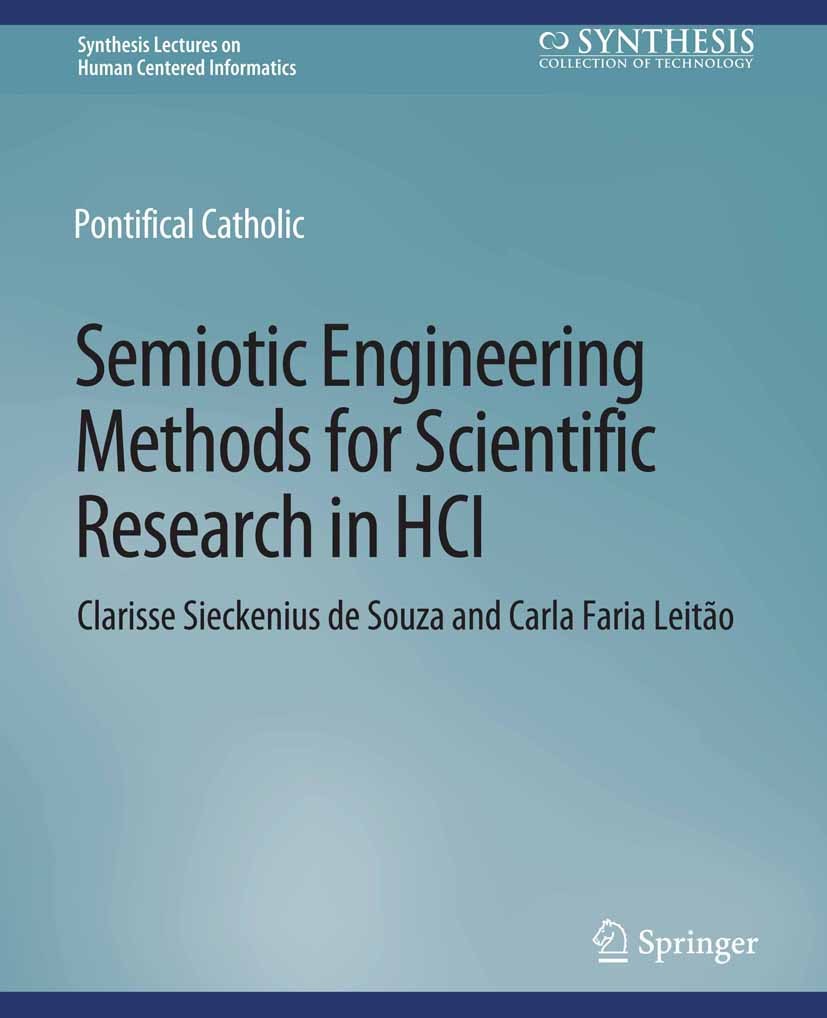| 书目名称 | Semiotic Engineering Methods for Scientific Research in HCI | | 编辑 | Clarisse Sieckenius Souza,Carla Faria Leitão | | 视频video | http://file.papertrans.cn/865/864990/864990.mp4 | | 丛书名称 | Synthesis Lectures on Human-Centered Informatics | | 图书封面 |  | | 描述 | Semiotic engineering was originally proposed as a semiotic approach to designing user interface languages. Over the years, with research done at the Department of Informatics of the Pontifical Catholic University of Rio de Janeiro, it evolved into a semiotic theory of human-computer interaction (HCI). It views HCI as computer-mediated communication between designers and users at interaction time. The system speaks for its designers in various types of conversations specified at design time. These conversations communicate the designers‘ understanding of who the users are, what they know the users want or need to do, in which preferred ways, and why. The designers‘ message to users includes even the interactive language in which users will have to communicate back with the system in order to achieve their specific goals. Hence, the process is, in fact, one of communication about communication, or metacommunication. Semiotic engineering has two methods to evaluate the quality of metacommunication in HCI: the semiotic inspection method (SIM) and the communicability evaluation method (CEM). Up to now, they have been mainly used and discussed in technical contexts, focusing on how to de | | 出版日期 | Book 2009 | | 版次 | 1 | | doi | https://doi.org/10.1007/978-3-031-02185-5 | | isbn_softcover | 978-3-031-01057-6 | | isbn_ebook | 978-3-031-02185-5Series ISSN 1946-7680 Series E-ISSN 1946-7699 | | issn_series | 1946-7680 | | copyright | Springer Nature Switzerland AG 2009 |
The information of publication is updating

|
|
 |Archiver|手机版|小黑屋|
派博传思国际
( 京公网安备110108008328)
GMT+8, 2025-12-15 07:52
|Archiver|手机版|小黑屋|
派博传思国际
( 京公网安备110108008328)
GMT+8, 2025-12-15 07:52


